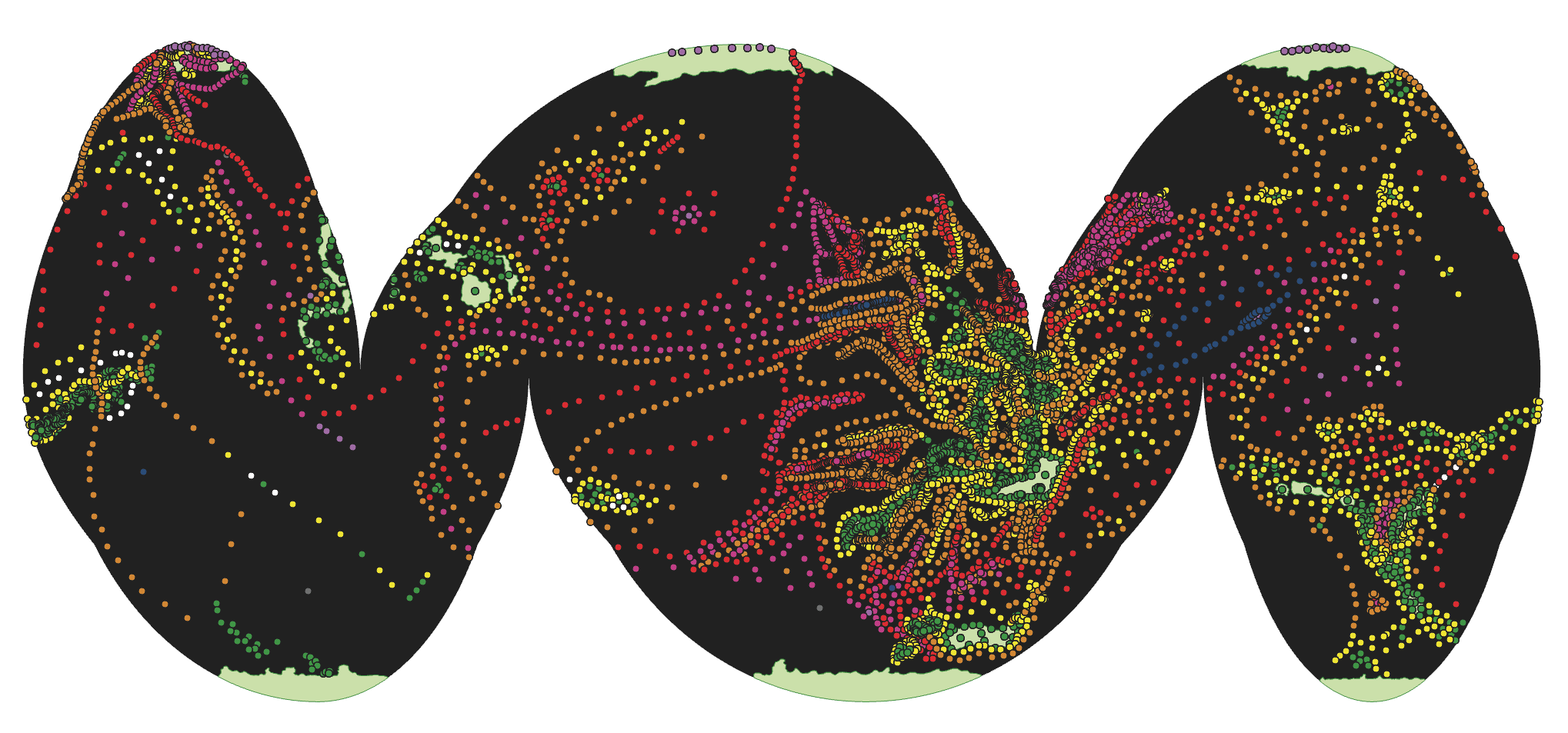Already time for the December update, and there’s a lot to share...
Art Update
Let’s talk art first. Ben is nearing completion of the field guide art and here’s some works-in-progress for a couple of the most recent images - the hexaboar and leviathan but not too scale.
Ben is so awesome to work with and it’s increasingly likely he will also be doing the tech art. Here is his rendering of a basic cetacean CICADA. He offered various design options and folks picked their favorite over on our Twitter feed. Let us know what you think?
In other art news, I have been cranking away on art direction for the general interior illustrations, greatly helped and inspired by the suggestions backers made as part of our illustration survey (108 entries!). Some I've assigned almost word-for-word - like the cyclonic rescue and Second Try images from the November update. There was a lot of overlap in the suggestions however, which meant there were also many important aspects of the setting that were not represented in the entries. Accordingly, I've tweaked and combined elements of many of the suggestions to fill those gaps - everything from asteroid mining in the Serpentis system, to sperm whale observance of the whale song to the new COAP sky hook on Earth (see below). So, if in the end you don't see your specific suggestion as a fully rendered image in the final books, know that it will certainly be in there as essential inspiration.
Maps Update
In case you didn't know, Mark Richardson, the artist responsible for the new map render of the Pacifica Archipelago in the Recontact primer, makes his living as an actual real world cartographer. He is using his considerable expertise to help lend Poseidon even more verisimilitude by rendering a bunch of maps for the project using professional map making science and technology. He has been sharing his process via Twitter, and I've reposted some excerpts here just to show you how cool it is!
"Yesterday I managed to find a process that gives fairly solid DEM results from Points with Heights so now I have to build up a database of points for the world. I'm doing this at 3,000 metre depths so points are either 0, -3k, -6k, -9k, -12k and a few -13/14 for the extra. One more thing I'm using a trick I learned from Surveying work, change your colours to bright vibrants and your background to BLACK, it makes it all POP and is actually easier on the eyes for long bouts of drawing. What you draw doesn't need to equal the end state."
"Forty minutes of points later... I'm a little unsure how the it will suss out. Too much or not enough detail is gonna be weird to nail down with so much interpolation. Moar points = more data, I only have a few depth values outside of Pacifica Archipelago which is why you get this pattern but this looks like it's going to work really well for the the Globe."
Text Update
We are making some additions throughout the text of the new edition to improve the science, update the technology and increase the socio-political tensions. Thought I'd share a preview of some of the latter here.
"In 2139 a limited conglomerate including representative divisions from a majority of Incorporate and national states surprised the world by announcing its intention to build a second Earth skyhook. Frustrated by restrictive lift schedules, capacities and GEO regulations, Atlas Materials, Biogene, Hanover Industries, McLeod Enforcement and the Chinese government led an unprecedented, cooperative initiative. Design, financing and construction took almost 10 years, and given the extreme security at the time, observers could only speculate on the internal politics that must have plagued the project. Driven on however, by the vast increases in capacity and profits a larger, unregulated skyhook would provide, the project was eventually completed and the first payload was delivered to orbit in early 2149.
Unimaginatively dubbed the Cooperative Orbital Access Project, the COAP has proven to be even more profitable than anticipated – though exactly how those profits are distributed within the conglomerate remains proprietary. With a transport capacity almost twice that of the Ecuador hook, the COAP vastly increased the Incorporate exploitation of the Solar system and unexpectedly provided essential facilitation of the Long John rush to Poseidon.
The planetside terminal was sited at the equator southwest of the vast urban sprawl of Mombassa, Kenya. Already an Incorporate stronghold as the home of McLeod Enforcement headquarters, the east African location provided ready access to a vast workforce, abundant carbon resources and standing security infrastructure.
The most prominent political and anti-colonial voices in Kenya, among the surviving international community, and even in the GEO went unheeded. Despite protests, boycotts, political censures and sanctions, in the end little consideration was given to the long term economic and social consequences of anchoring the skyhook in a region still struggling to recover from the Blight
The economic boom the Incorporate hook brought to Mombassa is unprecedented, but as feared, this has not proven a universal boon. The largely unrestricted urban sprawl that has rapidly grown around the planetside terminus, known as Obiti Jiji, has brought with it all the benefits, troubles and tragedies boomtowns have always created. Densely populated, poorly regulated, lacking adequate infrastructure, “Orbit City” has become an object lesson in the excesses and failures of Incorporate urban management."
Hope you like what you see, let us know in the comments and join us on Twitter for more frequent updates and chances to even influence the project.



